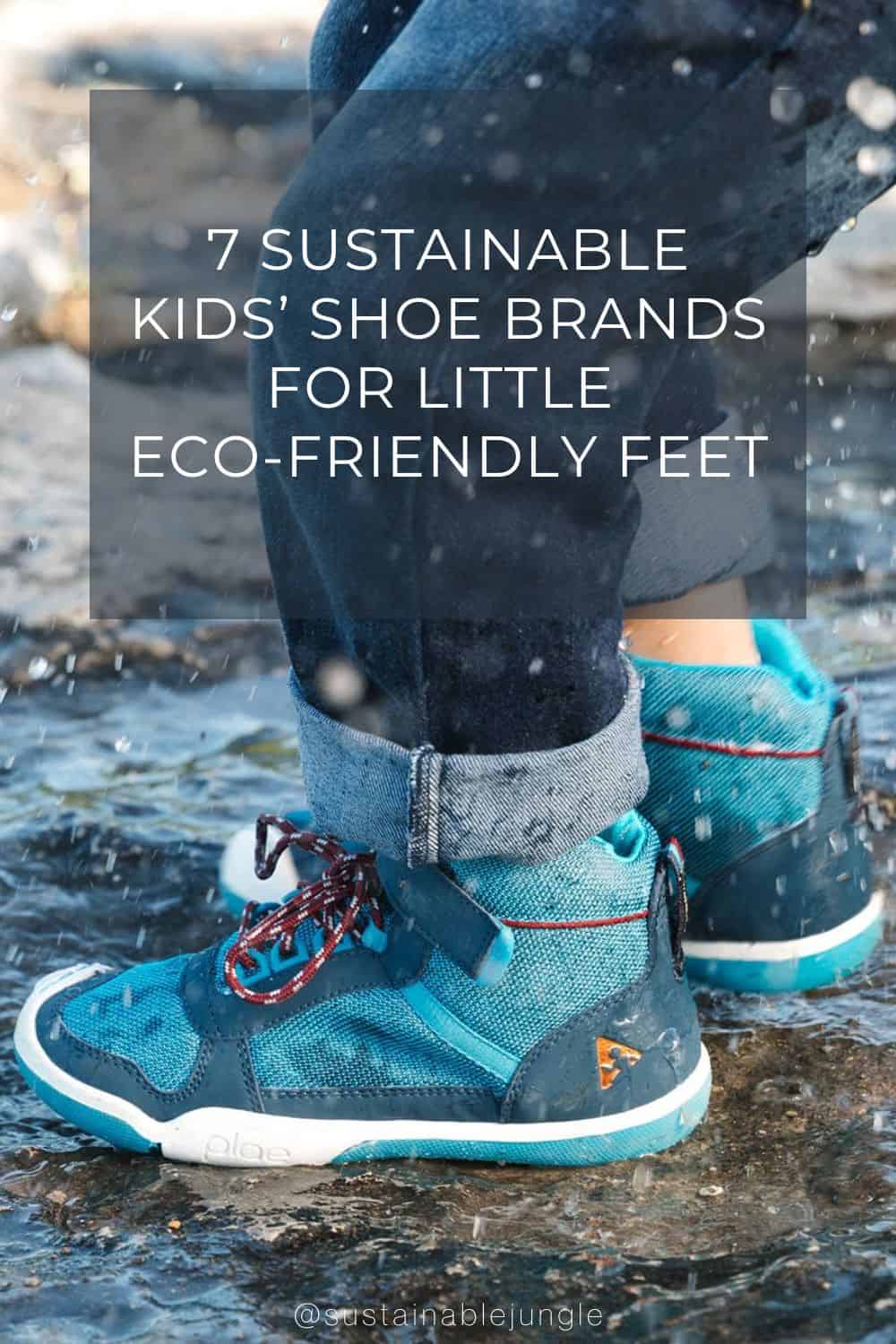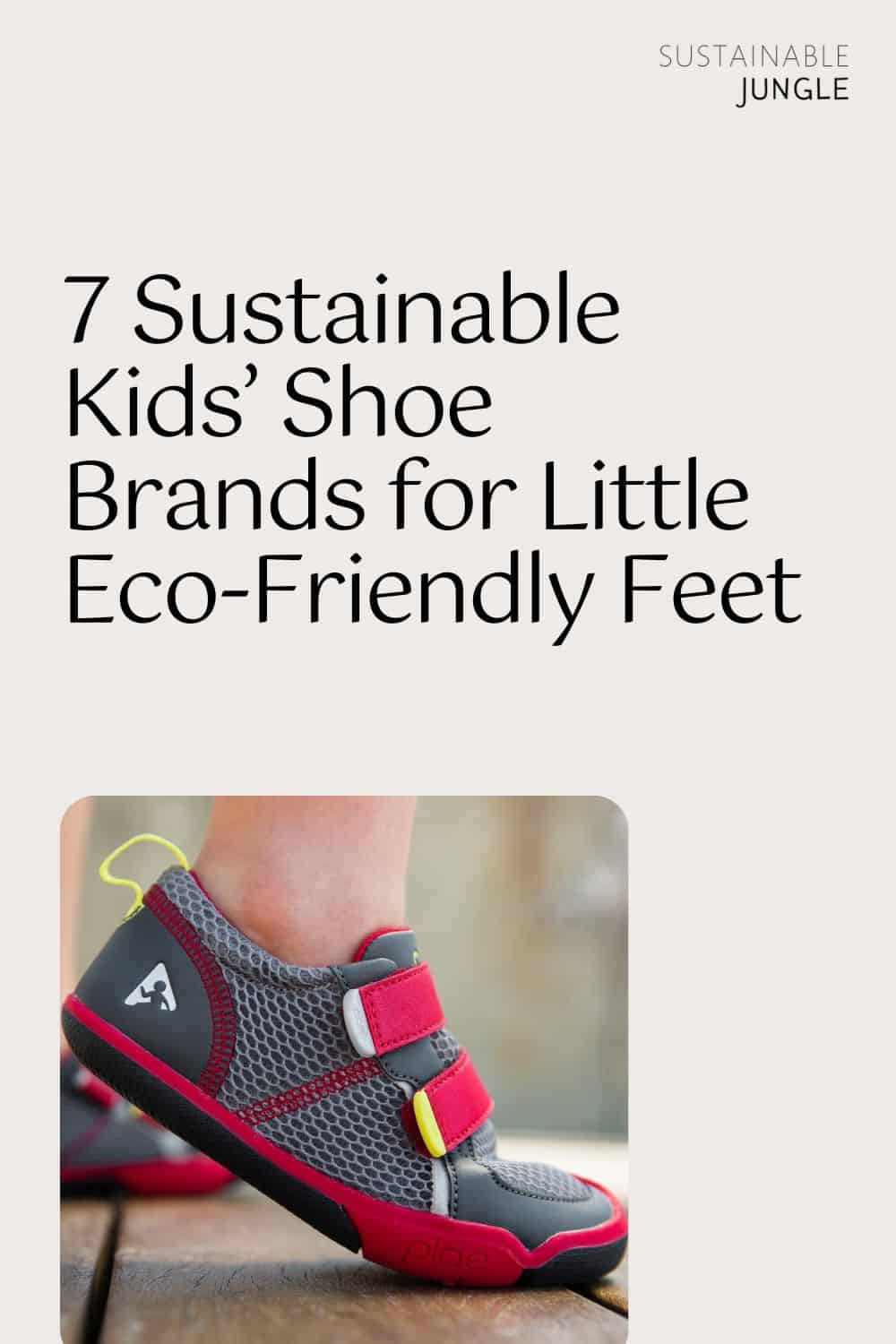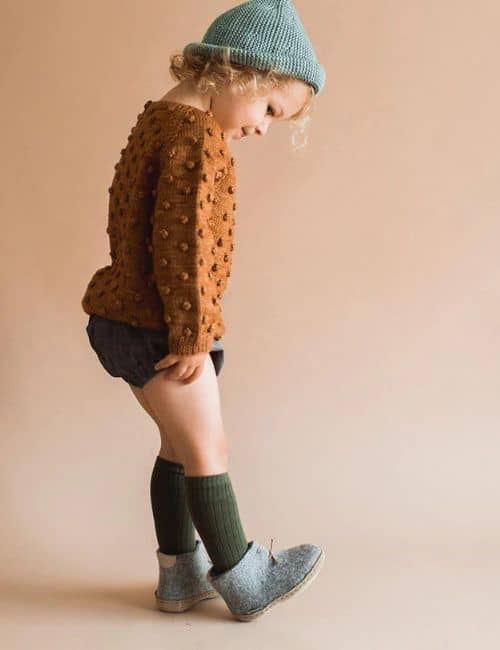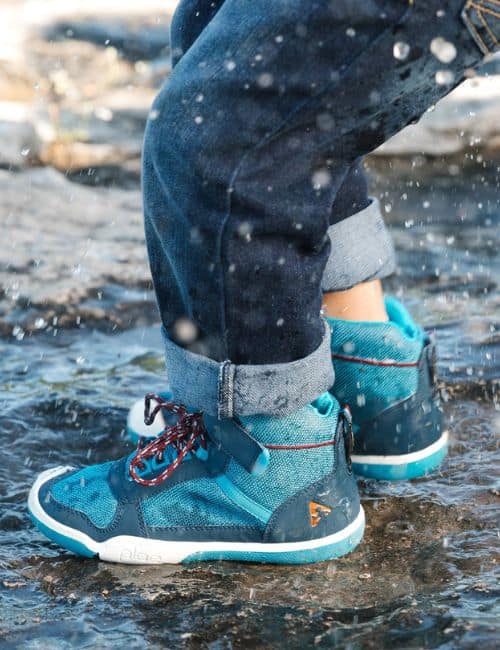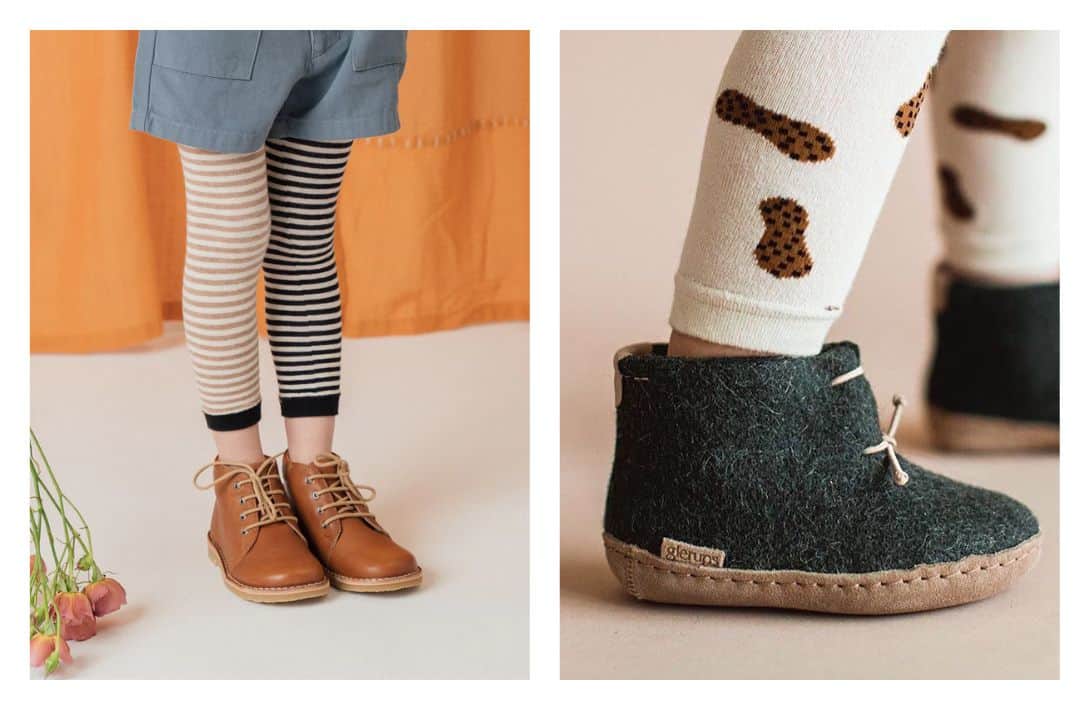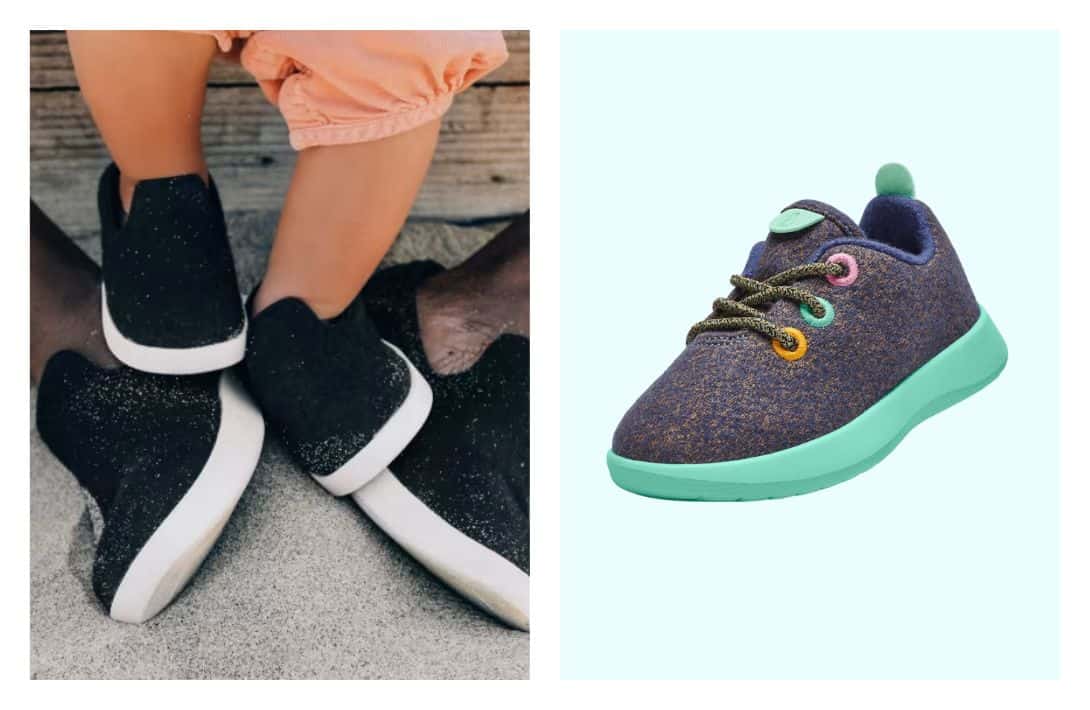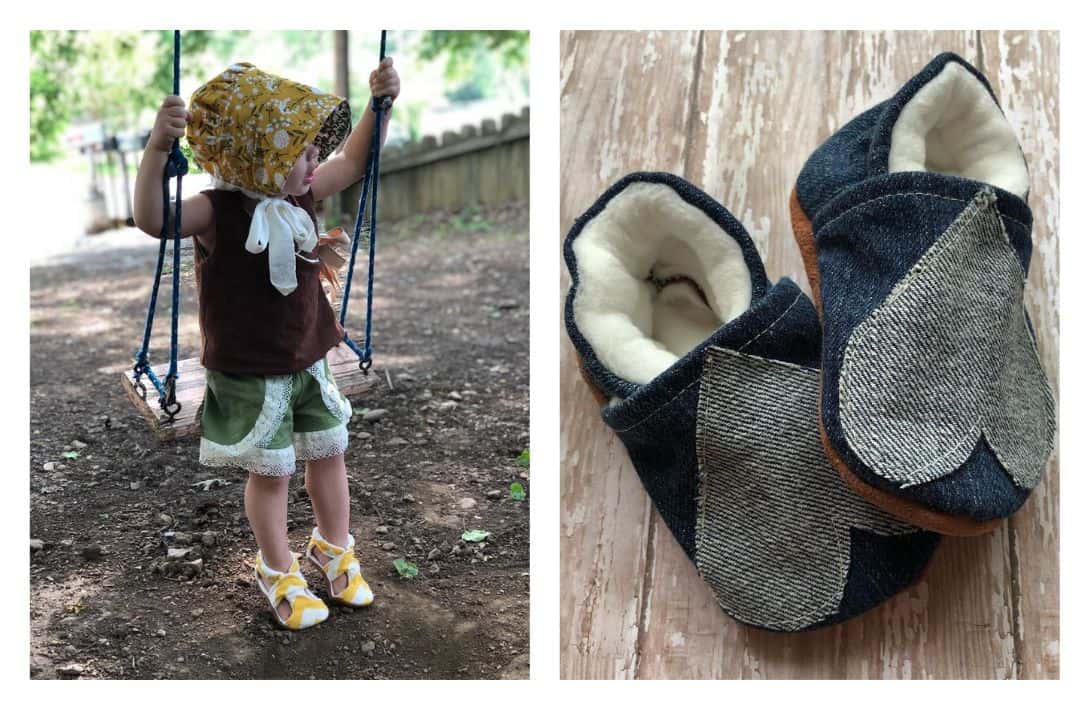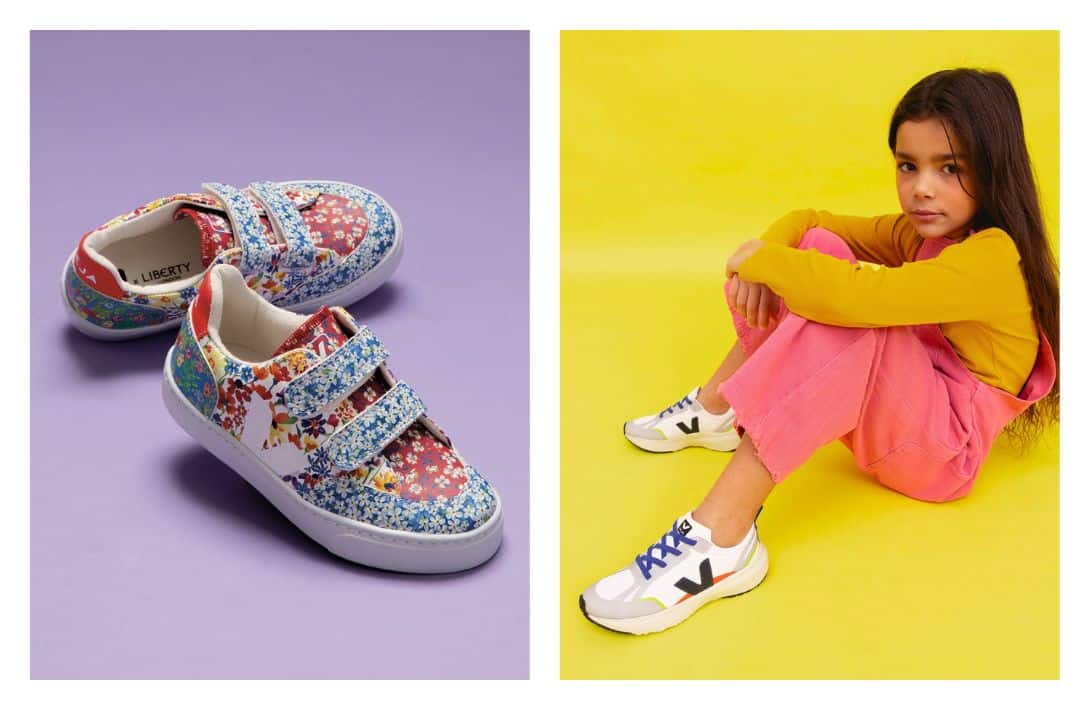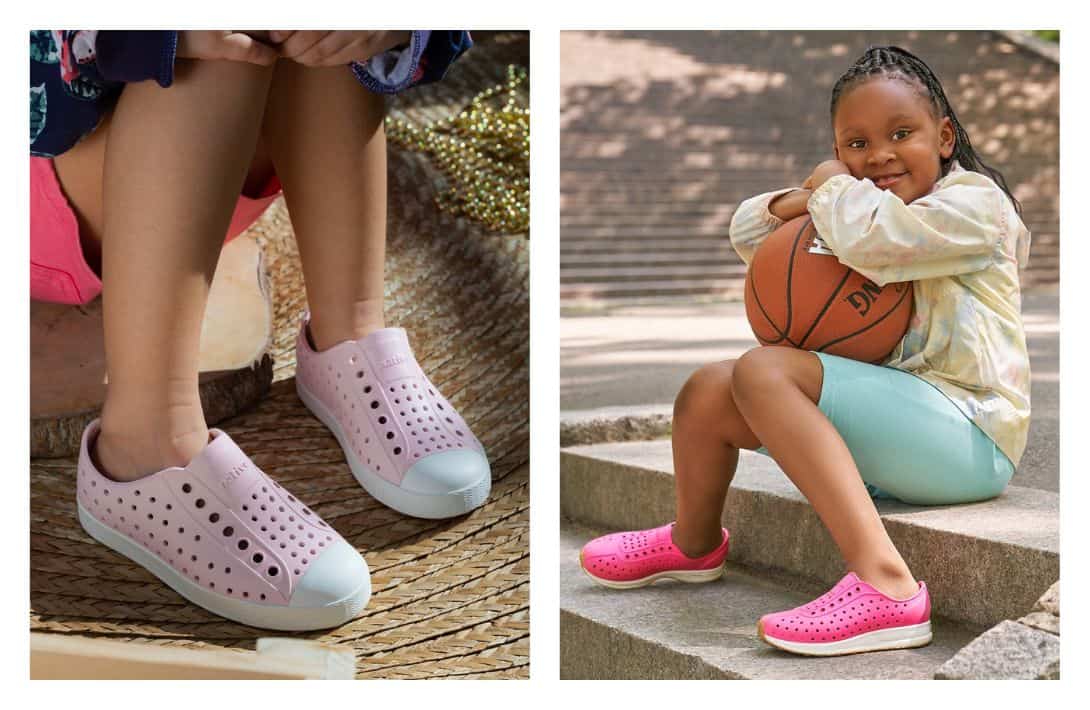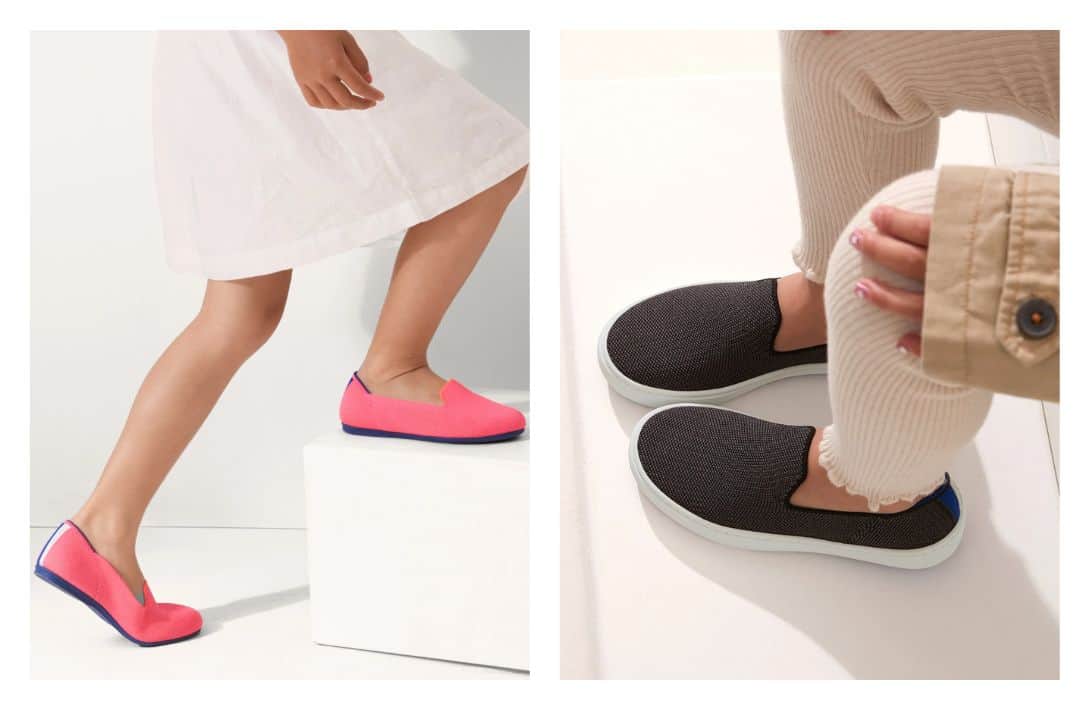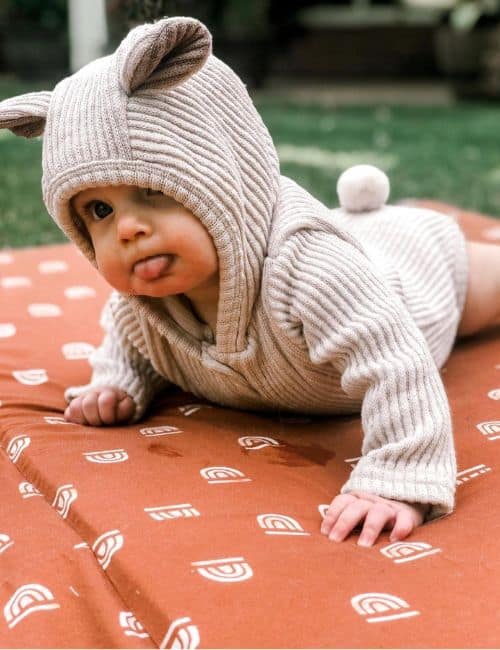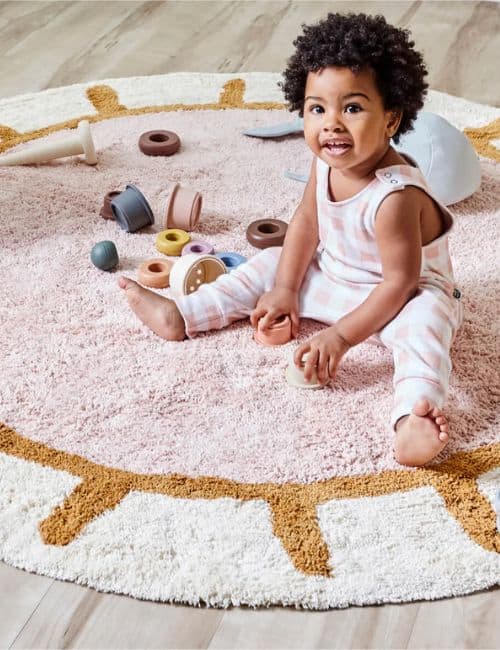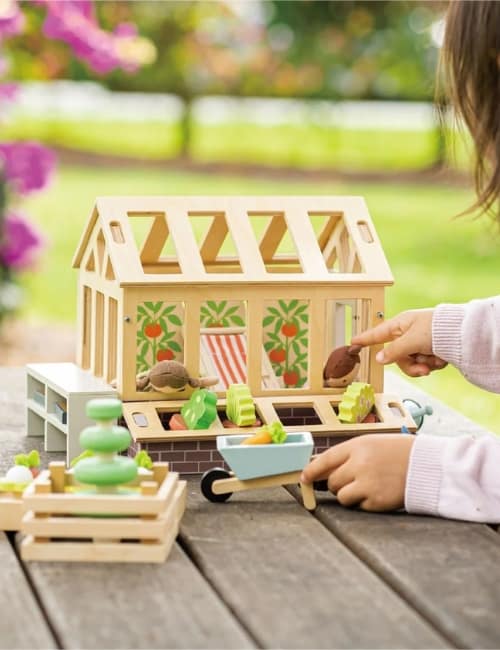7 Sustainable Kid’s Shoes & Brands for Little Eco-Friendly Feet
We know how much you love your little darlings. They are the center of your universe, but must they grow so quickly?
No sooner have you bought an adorable little pair of shoes than their toes are all squished, and you’ve got to endure another yet eventful trip to the shoe store.
Enter: sustainable kid’s shoes. Yes, they are still shoes but at least with a pair of these you’ll leave some of your eco-woes at home—like how those shoes are impacting the planet your little tyke will someday inherit.
Hopefully, they’ll take note and when the time comes for them to buy their own, they’ll happily walk in your eco-friendly footsteps by continuing to support ethical shoe brands.
Everything we recommend to you on Sustainable Jungle is independently researched and we ask all brands to confirm their claims. To avoid waste, we test products on an as needed basis. This post contains affiliate links. If you buy something through our links, we may earn a small commission. Learn more about why we do this here.
The Most Sustainable Shoes Your Kids Can Kick Around In
They may not make eco-friendly toys, but PLAE is about all things play, so its sustainable kids’ footwear is made with rough and tumble in mind—so much so that the brand encourages you to resell them through their circular fashion partners.
“Wear plants, not plastics” is the motto of Allbirds. Their washable their Smallbirds eco-friendly shoes for kids will be a boon to parents of messy explorers everywhere.
Struggling to find a couple of spare minutes because your little darlings can’t sit still?
Skip to the bottom to read about how we navigate the minefield (or rather Legofield, which certainly feel like landmines when stepped on) to uncover the best sustainable kids’ shoes brands.
The Full List Of Sustainable Kids Shoes
- PLAE | Visit Store
- Noble | Visit Store
- Allbirds | Visit Store
- The Tiny Shoe Shop | Visit Store
- Veja | Visit Store
- Native | Visit Store
- Rothy’s | Visit Store
1. PLAE
About PLAE
Price Range: $46–$115
PLAE is a brand name that’s synonymous with all things play.
Its range of eco-friendly kids’ shoes is designed to handle the challenges of kids’ play—from toddler tennis shoes and the Chloe Mary Janes to big kid snow boots.
It’s not just kids they cater to, either. Their shoes encourage the oldest to the youngest to embrace their inner child and the benefits of play.
PLAE’s Ethical & Sustainability Practices
Materials:
PLAE kids’ sustainable shoes utilize recycled PETfor the uppers, adhered with water-based glues.
We’re not sure what the sole components are made of and will be reaching out to ask.
Supply chain & labor practices:
While we know they’re manufactured by hand across 300 steps, we don’t know where or under what ethical protections.
We’ll also be touching base for more information on specifics here.
Carbon commitments & green practices:
PLAE shoes for kids are hand-made in Vietnam in solar-powered factories.
You’ve heard of “pay-it-forward” but how about “PLAE-it-forward”?
The Kidizen REWEAR Collective encourages parents to get even more out of each purchase. You can pass on any outgrown eco shoes for toddlers in exchange for PLAE rewards that can be used for future purchases.
Inclusivity:
PLAE shoes are designed and engineered to allow for the accommodation of various orthotics and AFOs.
Community & charitable giving:
Customers can donate their PLAE rewards to help support RACE4Good, a Global Youth League founded by Linda Cruse.
2. Noble
About Noble
Price Range: $65–$170
Noble believes that sustainability isn’t just for adults; sustainability for kids is just as important.
That’s why they sell some core essentials for raising an eco tot—toys, PJs, clothes, and footwear—as well as clothing for Mom.
While Noble does offer its own line of clothing, they primarily sell the wares of other sustainable brands that are judged on strict criteria, including eco-friendly toddler shoes made by Petit Nord and Glerup.
Whether you want something warm and cozy or dressy like the Low T-Bar Flower, their small but well-rounded selection has a touch of everything.
Noble’s Ethical & Sustainability Practices
Materials:
Petit Nord toddler booties and dress hoes pair lightweight recycled rubber soles with a “100% ecological” vegetable-tanned and chrome-free leather upper.
While Glerups eco-friendly baby shoes are made from naturally processed felted merino wool with a soft, calf-leather sole. We’re not sure how this calf leather is processed and will be reaching out to ask.
Supply chain & labor practices:
Glerups shoes are handmade in a small workshop in Denmark.
Petit Nord’s sustainable shoes for kids are hand-made in four different family-run workshops in Portugal. All Petit’s Nord’s materials are also sourced in Europe, keeping the supply chain local and under strict EU ethical standards.
While they don’t make shoes themselves, Peru is the manufacturing base for Noble’s in-house garments under a vertical manufacturing operation.
Even the 100% GOTS-certified organic Pima cotton used in their clothing is grown, milled, and sewn there.
Carbon commitments & green practices:
Peruvian Pima Cotton is drought tolerant which means it takes 50% less water to grow.
Between Noble’s own localized manufacturing and that of many of their partner brands, they’re able to reduce shipping emissions within the supply chain.
You can mail in your used Noble threads for store credit
3. Allbirds
About Allbirds
Price Range: $55–$80
Allbirds says it all with the slogan “Wear Plants, Not Plastic”.
Replacing petroleum-based synthetic materials with natural ones, their Smallbirds line of ethical baby shoes and kids’ shoes are for parents who want their kids to rock the same comfy style.
Allbirds kids’ shoes come in the same two styles for little and big kids, both of which are completely washable—a priceless feature when you consider how much your kids love to get dirty.
Allbirds’ Ethical & Sustainability Practices
Materials:
ZQRx regenerative wool is used for Smallbirds Wool Runners and Loungers alike, meaning it’s both ethical and grown using regenerative agriculture practices that restore land and sequester carbon.
The outsole is FSC-certified natural rubber and the laces are recycled polyester.
Allbird’s adult sustainable sneakers use either a 48% bio-based castor bean oil midsole or a sugarcane-based carbon-negative EVA midsole, but we’re not sure which applies to their Smallbirds line.
Supply chain & labor practices:
As Certified B Corp, Allbirds only sources from the best. Products are assembled in WRAP-certified or other ethically-vetted factories in China, Vietnam, and South Korea (in the case of their sustainable shoes for kids).
Along with basic fair trade equivalent standards, their policy against subcontracting within Allbird’s Code of Conduct ensures the company can monitor the working conditions.
The ethical wool comes from New Zealand, a country with an excellent reputation for humane sheep farming. The fibers are spun at Europe’s only EC-certified sustainable wool mill in Milan, Italy.
Carbon commitments & green practices:
The Allbirds business is certified Climate Neutral by funding high-impact carbon projects. Project funding is across three sectors: land, energy, and air. Any projects invested in also have to be Climate Neutral and B Corp-certified.
But they’re not stopping at carbon-neutral. After a 12% emission reduction last year, their Flight Plan lays out a course of action to continue this trend.
Helping factories switch to 100% renewable energy by 2025 is one step, and recirculating more secondhand Allbirds shoes through ReRun is another.
“Every box deserves a second chance,” so expect your purchases to arrive in 100% recycled cardboard with the product’s carbon footprint on the outside— 2.9kg CO2 for their Smallbirds Wool Loungers.
Community & charitable giving:
Allbirds has a partnership with Soles4Souls which helps returned shoes find new homes with those who need them most.
4. The Tiny Shoe Shop
About The Tiny Shoe Shop
Price Range: $29–$48
The Tiny Shoe Shop offers ethical baby shoes that are handmade-to-order, one pair at a time.
There’s nothing quite like babies feet for cuteness, but these soft booties raise the cuteness bar even further with adorable printed—unicorn or carrot-printed booties, anyone?
Clear instructions explain how to size your baby’s feet, so there’s no misunderstanding or waste.
The Tiny Shoe Shop’s Ethical & Sustainability Practices
Materials:
The Tiny Shoe Shop uses organic cotton for both the upper exterior and the soft sherpa lining.
While some only have a vegetable-tanned leather outsole, any of their “custom” or “made-to-order” styles give the choice of swapping that for a polyester vegan leather called Toughtek.
Supply chain & labor practices:
All sustainable children’s shoes are handmade in Rogers, Arkansas.
Carbon commitments & green practices:
Etsy offsets carbon emissions from the delivery and packaging of items purchased from this eco-friendly kid’s shoe brand.
5. VEJA
About VEJA
Price Range: $70–$135
VEJA is a Brazilian word for “look”, which is exactly what you should be doing at this French footwear company’s range of adult and fair trade kids’ shoes.
Rather than using petroleum-based materials and cheap manufacturing methods, they create high-quality shoes made from recycled, partially bio-based, or natural materials.
If you already own a pair of their sustainable running shoes and are seeking a matching pair for your mini me, check out the recycled polyester Alveomesh Sneaker.
VEJA’s Ethical & Sustainability Practices
Materials:
Some of their eco-friendly shoes for kids feature chrome-free or vegetable-tanned leather sourced leather, sourced from LWG Gold-certified and REACH-compliant tanneries.
Vegan styles swap out leather for B-mesh, made from 100% recycled plastic bottles. Corn-based vegan leather and Hexamesh are additional eco-friendly materials commonly used.
Other components are largely bio-based materials, including sugar cane insoles and midsoles, rice waste and natural Amazonian rubber outsoles, castor bean inserts, and organic cotton harvested in Brazil and Peru canvas and laces.
Recycled polyester makes up most shoe linings.
Supply chain & labor practices:
The brand’s range of sneakers is produced in Brazil, where workers are well-compensated and work in ILO-compliant spaces.
As a Certified B Corp, they go that extra mile by purchasing various materials, including their fair trade organic cotton and rubber for twice the market price.
Carbon commitments & green practices:
VEJA has taken a company-wide approach to its commitment to reducing carbon emissions, starting with an in-depth report that looked at the manufacturing process from start to finish.
Numerous changes have been made including the use of public transport, bicycles, and walking to the office, increasing the use of more ecological leather, forgoing advertising, and choosing clean energy.
VEJA stores in France and NYC accept old sustainable footwear for repair or to be recycled.
Community & charitable giving:
The logistics side of VEJA is entrusted to vulnerable, disabled, and socially excluded people. Atelier Sans Frontieres manages the company’s logistics activity from a purpose-built warehouse south of Paris.
6. Native Shoes
About Native Shoes
Price Range: $32–$65
If you couldn’t guess from the name, Native Shoes knows footwear—for both full-size or still growing feet.
This vegan shoe brand’s sustainable kids’ shoes are designed for active little feet with a lightweight design that won’t slow kids down while helping them Live Lightly™.
You can shop for boots, sandals, or the ever-popular laceless Jefferson sneaker, whose bio-based soles decrease emissions by 22%.
Native Shoes’ Ethical & Sustainability Practices
Materials:
The Jefferson combines a Sugarlite sugarcane-derived upper with injection-molded bio-based EVA resin.
Knitted uppers in the Nova Hydroknit range are made using 50% recycled PET yarn.
Other natural sustainable materials include pineapple leaf fiber, cotton, and repurposed algae foam, though there are also some to avoid (PU, microfleece, and standard EVA).
Supply chain & labor practices:
The shoes in the Native collections are currently made in China and Vietnam.
Stringent ethical practices are in place including the prohibition of forced labor, monitoring of working hours, and regulation of fair wages.
Carbon commitments & green practices:
Native has been focusing on its carbon impact for a few years and looking for ways it can make a difference using science-based targets and calculated emissions reports.
Currently, the Iconic Jefferson style is one of the lowest-impact shoes in the market, producing just 3.85 kg CO2e per pair (compared to 10-20CO2e for traditional shoes).
The Native Shoes Remix Project takes your kiddos well-loved soles and gives them a new lease of life by grinding down the materials to create seating, insulation, playground flooring, and more.
Other brands sent in are sorted and donated to good causes or recycled.
7. Rothy’s
About Rothy’s
Price Range: $55–$85
You may know Rothy’s as one of the best women’s sustainable flats brands, but did you know they make a range of sustainable children’s shoes?
Complete with lace-free sneakers and loafers, each pair is vibrant, hard-wearing, and fun.
If you’re looking for the best black or blue eco-friendly shoes, little kids will love The Kids Sneaker, a line of comfortable, knit slip-ons for all-day play.
Rothy’s Ethical & Sustainability Practices
Materials:
Rothy’s helps to keep plastic off the planet by transforming plastic bottles and ocean-bound waste into their signature thread used in their vegan shoes for kids and adults alike.
To support little learning legs, the footbeds and Strobel boards are algae-based, reducing biodiversity damaging algae in waterways.
A big pro of these recycled kids’ shoes is that they’re machine washable. Simply remove the insole and pop them in the washing machine to extend their life further.
Supply chain & labor practices:
Rothy’s manufacturing takes place in its wholly-owned factory in Dongguan, China.
The company enjoys an exceptionally high retention rate thanks to the best-in-class factory benefits and wellness-focused working environment.
Carbon commitments & green practices:
Rothy’s is committed to commitment to a circular business model and reducing emissions.
The material knitting process uses 3D printing technology, resulting in a 30% reduction in material waste compared with traditional manufacturing methods.
They currently offer an in-store recycling program and offsets operations through Carbonfund’s Envira Amazonia Project, but they aim to be carbon-neutral and use a fully circular production process sometime in 2023.
There is a range of adult’s shoes made using a closed-loop production model, but these aren’t available for little ones yet.
Product packaging consists of 95% post-consumer recycled materials.
Community & charitable giving:
Aside from their regular giving partner, the Breast Cancer Research Foundation, Rothy’s has rotating initiatives, like donating shoes to inspire confidence in women seeking new career opportunities through Dress for Success Worldwide.
Did you know we Have a Newsletter?
We cover the latest in sustainable living, fashion, zero waste, beauty, travel, finance and more…
How We Found The Best Eco-Friendly Kids’ Shoe Brands
As any parent can tell you, durability is the most important thing when you’re shopping for kids’ shoes, sustainable or otherwise. Kids are tough on stuff!
But how can we balance durability with more sustainable materials and green business practices? And how did we avoid greenwashing while doing so?
Welcome to your first day of sustainable and ethical fashion school:
Materials:
As low an impact as possible is the ultimate aim, along with as few materials as possible. Even sustainable fabrics come from somewhere, and often, that’s a factory across the other side of the world.
Renewable, organic (much like these organic kid’s clothing brands use), or natural are of course preferred, as these can be composted and are thus zero waste.
However, because even sustainable shoes are complex and involve multiple components that necessitate durability, so composting is pretty much never possible.
So we look for recycled synthetic and at least partially bio-based substitutes for components like laces, midsoles, and outsoles.
- Certifications: Global Organic Textile Standard (GOTS), ZQ Regenerative Index (ZQRx), Leather Working Group (LWG), Registration, Evaluation, Authorisation, and Restriction of Chemicals (REACH)
Supply chain & labor practices:
Human rights violations have been inherent in the fashion industry for many years, but things are turning around. Companies must treat their workers fairly and provide safe and meaningful opportunities for them all.
We look for those that pay living wages and are transparent when it comes to production processes. Ideally, these claims are backed up by manufacturing certifications, an imperfect but better-than-nothing safeguard against greenwashing.
- Certifications: International Labour Organization (ILO), Worldwide Responsible Accredited Production (WRAP), Fair Trade, B Corporation
Carbon commitments & green practices:
There’s always a lot of talk about carbon offset programs, but for a truly sustainable future, reducing emissions is critical.
The proactive changes we look for include the use of renewable energy, more localized supply chains, and regenerative material sourcing practices.
Resource management also plays a part, along with the recycling of old footwear, recycled packaging, and closed-loop manufacturing.
- Certifications: Climate Neutral
Community & charitable giving:
Brands that give back to their community and embody the “sharing is caring” lesson we teach our kids always get a gold star in our book. Fortunately, most of the brands mentioned here agree.
Final Thoughts On Sustainable & Ethical Shoes For Kids
Buying sustainable kid’s clothing and sustainable baby and kids shoes at the least ensures less toxic exposure and less impact on the world.
But because it’s in and out before they have a chance to wear out, the best answer for what to do with old shoes (kid’s edition) is probably to pass them on.
This might be to your next little angel coming up through the ranks, friends, charitable organizations, brand take-back programs, or platforms for selling clothes online.
By the same token, check out online thrift stores to see if you can score a pair of gently-used children’s shoes first. Making the choice to buy fewer pairs new is a big step toward reducing your carbon footprint (literally).
If you know someone with a growing family, pitter-patter this article over to their inbox so they can set their kids up for sustainable success.
Pin these:
